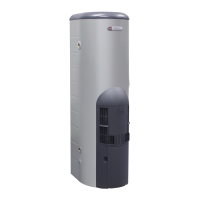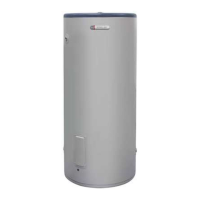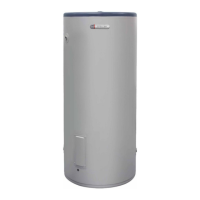WATER SUPPLIES
20
ANODE INSPECTION AND REPLACEMENT
The anodes installed in your water heater will slowly dissipate whilst protecting
the cylinder. The life of the cylinder may be extended by replacing the anodes.
For water supplies which are either softened or desalinated, or where the water
supply may alternate between a water tank and a reticulated public supply or
another supply, or where there is a variable supply (e.g. from a bore or public
reticulated supply from various water sources), each anode must be inspected
(and replaced if there is any sign of depletion) within five (5) years of its
installation, and within every three (3) years thereafter.
For all water supplies, if the anodes are not replaced during a major service (refer
to “Major Service Every Five Years” on page 18) then the maximum time after its
installation when the anodes should be replaced for this water heater is
ten (10) years.
CAUTION
If the water supply has a TDS greater than 150 mg/L and a green anode has not
been changed to a black anode, or if the TDS is greater than 600 mg/L and the
anode has not been changed to a blue anode, there is the possibility the anode
may become overactive and hydrogen gas could accumulate in the top of the
water heater during long periods of no use.
If, under these conditions, the water heater has not been used for two or more
weeks the following procedure should be carried out before using any electrical
appliances (automatic washing machines and dishwashers) which are
connected to the hot water supply.
The hydrogen, which is highly flammable, should be vented safely by opening a
hot tap and allowing the water to flow. There should be no smoking or naked
flame near the tap whilst it is turned on. Any hydrogen gas will be dissipated.
This is indicated by an unusual spurting of the water from the tap. Once the water
runs freely, any hydrogen in the system will have been released.

